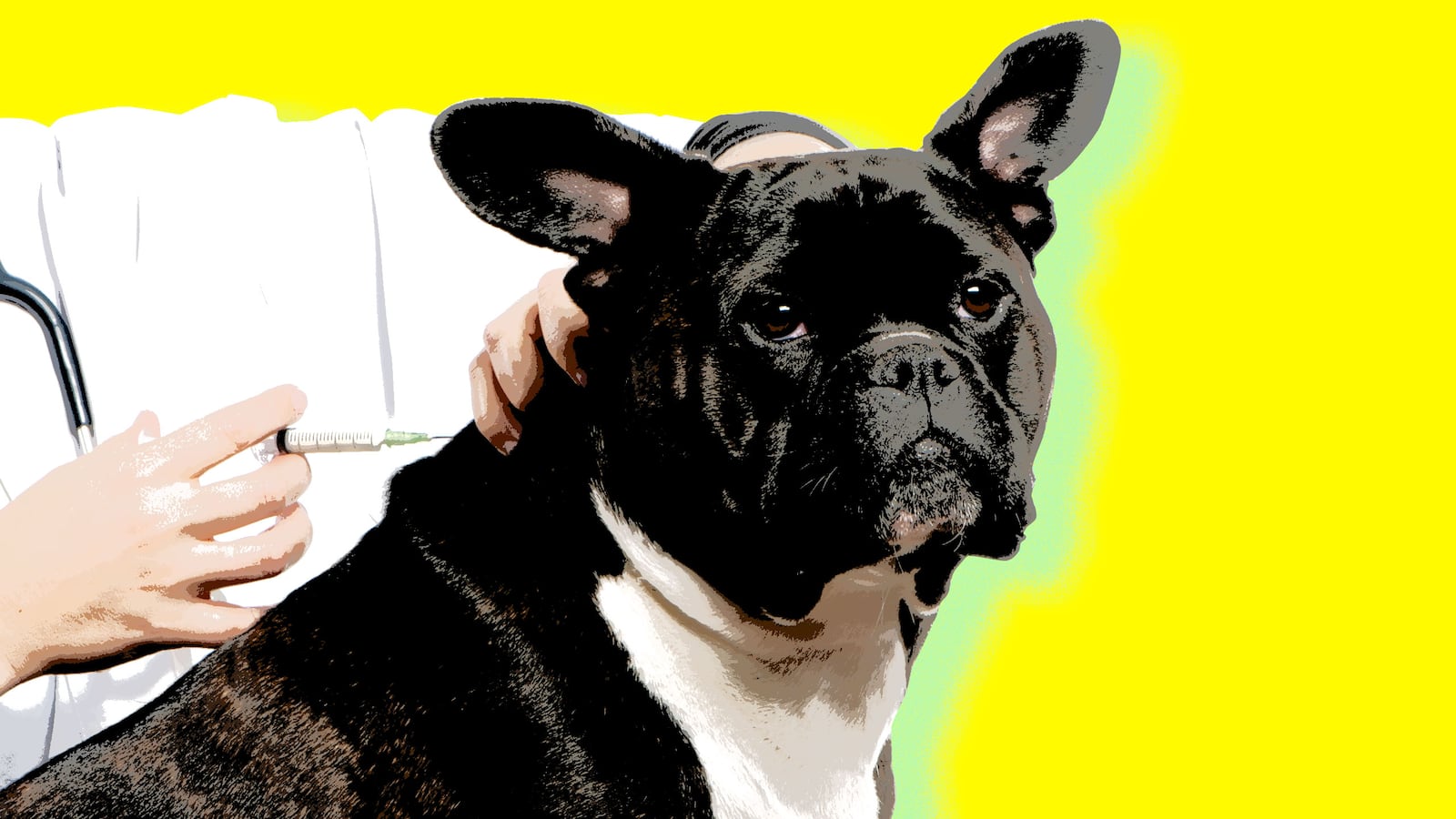America’s anti-vaccination movement might be claiming another victim: dogs.
“We see a higher number of clients who don’t want to vaccinate their animals,” said Dr. Amy Ford of the Veterinarian Wellness Center of Boerum Hill, New York. “This may be stemming from the anti-vaccine movement, which people are applying to their pets.”
The reason: fear of autism.
“I had a client concerned about an autistic child who didn’t want to vaccinate the dog for the same reason,” said Dr. Stephanie Liff of Clinton Hill’s Pure Paws Veterinary Care. “We’ve never diagnosed autism in a dog. I don’t think you could.”
The fear that vaccines might cause autism was born in 1998 when a British researcher claimed that the combination measles-mumps-rubella (MMR) vaccine was the culprit. Since then, 17 studies in 7 countries on three continents involving hundreds of thousands of children have shown that those receiving MMR vaccine were not more likely to develop autism than those who hadn’t received it. Putting aside the question of whether dogs can actually develop autism, pet owners should have been reassured by these studies.
Nonetheless, the fear persists. A critical number of parents are now choosing not to vaccinate their children. And it’s having an effect. In 2014, a measles outbreak in Ohio that involved about 700 people was larger than any seen in more than two decades. In 2015, a measles epidemic starting in Disneyland engulfed 25 states and two Canadian provinces. In 2016, more than 6,000 children suffered from mumps, a disease that had caused fewer than 200 cases just a few years earlier. In 2017, a measles epidemic affecting more than 70 children broke out in a Somali community in Hennipen County, Minnesota. Fortunately, although many children were hospitalized during these outbreaks, none died. Such was not the case in Europe this year, where outbreaks of measles in England, Italy, Germany, France, and Romania involving hundreds of young children has caused 35 deaths.
While young children in the United States receive vaccines to prevent 14 different diseases, young dogs receive four: canine parvovirus, canine distemper, canine hepatitis, and rabies. The reason that “rabies” isn’t preceded by “canine” is that rabies can infect people, too. It’s the same virus. Which is why all states require rabies vaccination for dogs.
Unlike canine parvovirus, canine distemper, and canine hepatitis, rabies isn’t spread by respiratory droplets or contaminated feces; it’s contracted by the bite of a rabid animal. In the United States, every year about 1 to 3 people die from rabies. The animals most likely to transmit the virus are bats, raccoons, skunks, and foxes, in that order. Because people are occasionally bitten by these animals, every year between 30,000 and 60,000 Americans are injected with the four-dose series of rabies vaccines.
The situation in the United States stands in stark contrast to the rest of the world. According to the World Health Organization (WHO), every year about 55,000 people die from rabies. And the most common source of these infections isn’t bats or raccoons or skunks or foxes; it’s dogs. Dogs also were a common source of rabies in the United States, killing about 100 people every year. Fortunately, rabies vaccination programs that began in the 1940s dramatically reduced the incidence of dog rabies.
So what happens if more and more pet owners choose not to give their dogs a rabies vaccine?
First, dogs suffer. According to the Compendium of Animal Rabies Prevention and Control, “Dogs and cats that have never been vaccinated and are exposed to a rabid animal should be euthanized immediately. If the owner is unwilling to have this done, the animal should receive a rabies vaccination and be placed in strict isolation for 4 months. Isolation in the this context refers to confinement in an enclosure that precludes direct contact with people and other animals.”
Second, people who were bitten—often children—suffer. People bitten by unvaccinated dogs are more likely to receive rabies shots than those bitten by vaccinated animals.
Every year in the United States, 80 to 100 dogs are infected with rabies. If the trend to withhold vaccines for dogs becomes widespread, dogs could once again become an important source of rabies. And people are much more likely to be bitten by dogs than by bats, foxes, raccoons, and skunks. Further, unlike measles, which has a mortality rate of about 0.1 percent, rabies has a mortality rate of about 100 percent. Only a handful of people with rabies have ever survived the infection.
Pet owners who chose not to give their dogs a rabies vaccine and parents who choose not to give their children an MMR vaccine represent a balance between individual freedoms and societal good. In the end, we have to ask ourselves whether pet owners or parents have the right to allow their children or their pets to catch and transmit potentially fatal illnesses?
Paul A. Offit, MD, is a professor of pediatrics and director of the Vaccine Education Center at the Children’s Hospital of Philadelphia. He is the author of Pandora’s Lab: Seven Stories of Science Gone Wrong (National Geographic Press, April 2017).






